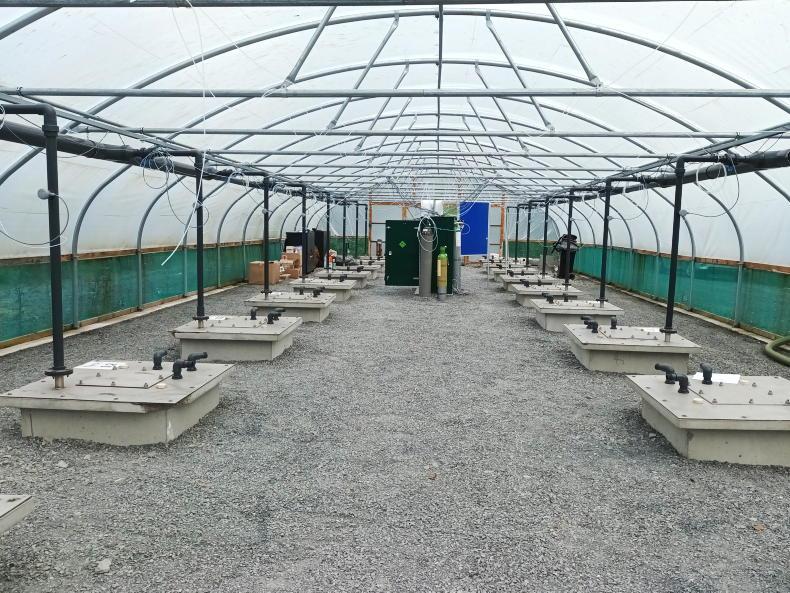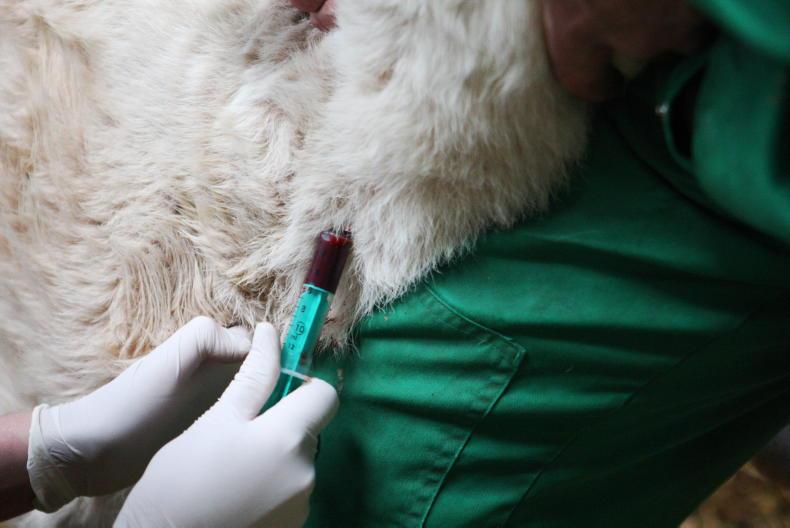The incomes on pig, beef and dairy farms will be the hardest hit by potential measures put in place to reduce ammonia emissions from NI agriculture, a new report commissioned by local agri-food organisations, has concluded.
The analysis by business consultancy firm, KPMG, looked at the implication of tighter rules around planning on farm businesses, as well as the costs farmers will incur to meet a DAERA 2030 target to cut ammonia emissions by 30%.
On the average pig farm, KPMG estimated that annual incomes could fall by 38%, with beef farms down 30% and the average dairy farm seeing a 21% income hit. The reductions on broiler and layer farms are around 8% and 7%, respectively.
In its analysis, KPMG makes a number of assumptions, including around the impact of an unsuccessful planning application on the average farm in each sector.
There is lost income because a new development has not been completed, but also added costs put on the farm as the business tries to comply with DAERA targets to reduce ammonia emissions.
It is a key argument made throughout the report – tighter rules around planning limits the ability of farmers to have new facilities fitted with the likes of new scrapers, slat mats and covers on slurry stores, all of which are necessary if ammonia is to be cut by 30%.
As well as investment in housing, to achieve the 30% target will require all slurry to be applied using low emission techniques, a switch from straight urea to protected urea, lower protein diets and a longer grazing season for cattle.
Previous work by scientists at the Agri-Food and Biosciences Institute (AFBI) has suggested that achieving the 30% reduction would come with an annual cost to farmers of around £44m.
“Considering the level of capex required, some level of public funding and support will be needed,” states the KPMG report.
Trends
But ultimately, if more farmers can’t get through planning it “slows down the transition to low ammonia farming”, warns KPMG.
Its report looked at recent planning trends, with councils taking eight weeks longer in 2022-23 to make decisions (an average of 58 weeks) than the previous year. In the 12 months to June 2023, a total of 85% of agricultural-related planning was approved.
However, those planning decisions relied on previous DAERA standing advice to councils (also known as the operational protocol).
Under that advice, projects that could demonstrate their contribution of ammonia at designated sites (within 7.5km) was less than 1% of critical levels, would be deemed acceptable.
In July 2023, DAERA asked for views on whether this threshold should be reduced to 0.1% as part of a future operational protocol.
DAERA said the situation won’t be resolved until a new ammonia strategy and updated standing advice have been agreed and are in place
According to the KPMG analysis, the share of planning applications affected by this threshold would increase from 22% to 57%. In other words, if a 0.1% limit is in place, 57% of applications would be subject to greater ammonia monitoring and paperwork, which ultimately could mean more applications are refused.
While DAERA is yet to update its operational protocol, in December 2023 it announced that it would no longer rely on the existing arrangements and instead would provide information to planners on a “case-by-case” basis.
The decision, which came in response to a legal threat from the Office of Environmental Protection, is expected to make it even more difficult for new farm sheds to get through planning.
Commenting at the time, DAERA said the situation won’t be resolved until a new ammonia strategy and updated standing advice have been agreed and are in place.
According to Ulster Farmers’ Union (UFU) president David Brown, the “more extreme position” around ammonia adopted by DAERA in recent weeks is likely to create an even greater impact than that set out in the KPMG report.
“We need to find a more balanced way forward that allows farmers to develop and deliver ammonia reductions, ensuring farm families can maintain a viable business as food producers,” said Brown.
Read more
NIEA drops ammonia advice after legal threat
Farmers must start carbon journey – KPMG report
The incomes on pig, beef and dairy farms will be the hardest hit by potential measures put in place to reduce ammonia emissions from NI agriculture, a new report commissioned by local agri-food organisations, has concluded.
The analysis by business consultancy firm, KPMG, looked at the implication of tighter rules around planning on farm businesses, as well as the costs farmers will incur to meet a DAERA 2030 target to cut ammonia emissions by 30%.
On the average pig farm, KPMG estimated that annual incomes could fall by 38%, with beef farms down 30% and the average dairy farm seeing a 21% income hit. The reductions on broiler and layer farms are around 8% and 7%, respectively.
In its analysis, KPMG makes a number of assumptions, including around the impact of an unsuccessful planning application on the average farm in each sector.
There is lost income because a new development has not been completed, but also added costs put on the farm as the business tries to comply with DAERA targets to reduce ammonia emissions.
It is a key argument made throughout the report – tighter rules around planning limits the ability of farmers to have new facilities fitted with the likes of new scrapers, slat mats and covers on slurry stores, all of which are necessary if ammonia is to be cut by 30%.
As well as investment in housing, to achieve the 30% target will require all slurry to be applied using low emission techniques, a switch from straight urea to protected urea, lower protein diets and a longer grazing season for cattle.
Previous work by scientists at the Agri-Food and Biosciences Institute (AFBI) has suggested that achieving the 30% reduction would come with an annual cost to farmers of around £44m.
“Considering the level of capex required, some level of public funding and support will be needed,” states the KPMG report.
Trends
But ultimately, if more farmers can’t get through planning it “slows down the transition to low ammonia farming”, warns KPMG.
Its report looked at recent planning trends, with councils taking eight weeks longer in 2022-23 to make decisions (an average of 58 weeks) than the previous year. In the 12 months to June 2023, a total of 85% of agricultural-related planning was approved.
However, those planning decisions relied on previous DAERA standing advice to councils (also known as the operational protocol).
Under that advice, projects that could demonstrate their contribution of ammonia at designated sites (within 7.5km) was less than 1% of critical levels, would be deemed acceptable.
In July 2023, DAERA asked for views on whether this threshold should be reduced to 0.1% as part of a future operational protocol.
DAERA said the situation won’t be resolved until a new ammonia strategy and updated standing advice have been agreed and are in place
According to the KPMG analysis, the share of planning applications affected by this threshold would increase from 22% to 57%. In other words, if a 0.1% limit is in place, 57% of applications would be subject to greater ammonia monitoring and paperwork, which ultimately could mean more applications are refused.
While DAERA is yet to update its operational protocol, in December 2023 it announced that it would no longer rely on the existing arrangements and instead would provide information to planners on a “case-by-case” basis.
The decision, which came in response to a legal threat from the Office of Environmental Protection, is expected to make it even more difficult for new farm sheds to get through planning.
Commenting at the time, DAERA said the situation won’t be resolved until a new ammonia strategy and updated standing advice have been agreed and are in place.
According to Ulster Farmers’ Union (UFU) president David Brown, the “more extreme position” around ammonia adopted by DAERA in recent weeks is likely to create an even greater impact than that set out in the KPMG report.
“We need to find a more balanced way forward that allows farmers to develop and deliver ammonia reductions, ensuring farm families can maintain a viable business as food producers,” said Brown.
Read more
NIEA drops ammonia advice after legal threat
Farmers must start carbon journey – KPMG report









SHARING OPTIONS